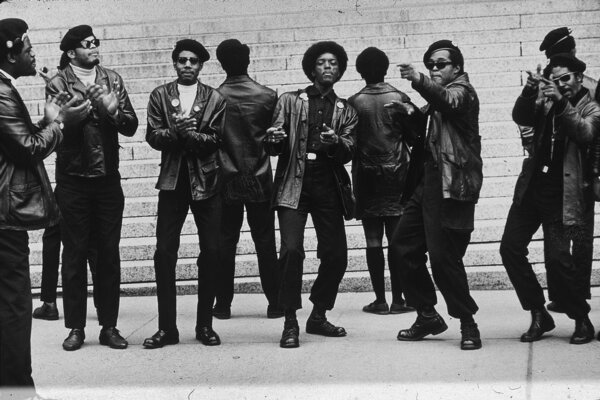
When you think of the Black Panther Party, you may think of only negative things. Unfortunately, thanks to the media and the U.S. government, this is far from the truth. In 1966, the Black Panther Party (BPP) was founded by Huey P. Newton and Bobby Seale in Oakland California to help their communities better themselves, as well as defend themselves and low income, minority communities against police violence. A description of the party’s clear mission statement is outlined in Beyond Radical Chic: The Black Panther Party by T. A. Davies:
“The Panthers saw the urban black ghetto as a kind of internal colony within the United States and police brutality as an extension of imperialist violence. The Oakland Police Department was the white coloniser’s armed force sent to keep local blacks, literally and metaphorically, ‘in their place’. The Panthers were a paramilitary liberation force that aimed to protect people from that oppression. Arming themselves with shotguns, they began conducting regular patrols, observing and recording police conduct in their neighbourhood.”
T.A. Davies, Beyond Radical Chic: The Black Panther Party
Those with legal open carry licenses would patrol their streets armed with guns, ensuring that unwarranted police violence would not go unmet. To counteract the media focusing on violent police interactions, those who weren’t allowed to legally open carry also patrolled, but they were in charge of filming any and all police interactions within their community – a practice which is still done by many today. They made a 10 point program for these communities that had things like free breakfast for kids, free legal aid, and free medical clinics. Although their main focus was on low income, minority communities, they also supported other “radical” movements such as the women’s rights movement and “gay liberation” movement.

What led to the Black Panther Party’s eventual disbandment in 1986 was a combination of two factors: lack of clear internal organization, and the FBI COINTELPRO surveillance program. When Eldridge Cleaver rose to leadership, he wanted to change the party focus to being more violent against police acts against them. There was conflict over what they should focus on as a movement: should they be focusing on the original mission statement of building up their communities? Or should the focus on “fighting the power” and reacting to police violence? This conflict led to disorganization, a split within the party, and was the ultimate downfall of the BPP.
The FBI COINTELPRO surveillance program only instigated this divide by proclaiming their acts as evidence of communism, infiltrating the headquarters to gain evidence for prosecution of members, and made a case to make it illegal to advocate for violent overthrow of the government. The police were also working against the party’s efforts, taking action against members. They assassinated known BPP members, raided known meeting places, and arrested as many as they could. This quickly became the norm and incited more violent actions by certain members, which also helped instigate the divide within the BPP.

This is a great example of activism because it wasn’t based on social media or media at all, its message was spread throughout lower class communities via word of mouth. The Black Panther Party was proactive in their activism, and it started as a grassroots movement to simply help their communities. Before the party ended, chapters of the party were spread throughout the U.S. and even in Europe. Links to further learn about the Black Panther Party and their mission can be found below.
https://www.history.com/topics/civil-rights-movement/black-panthers
https://www.marxists.org/history/usa/workers/black-panthers/


